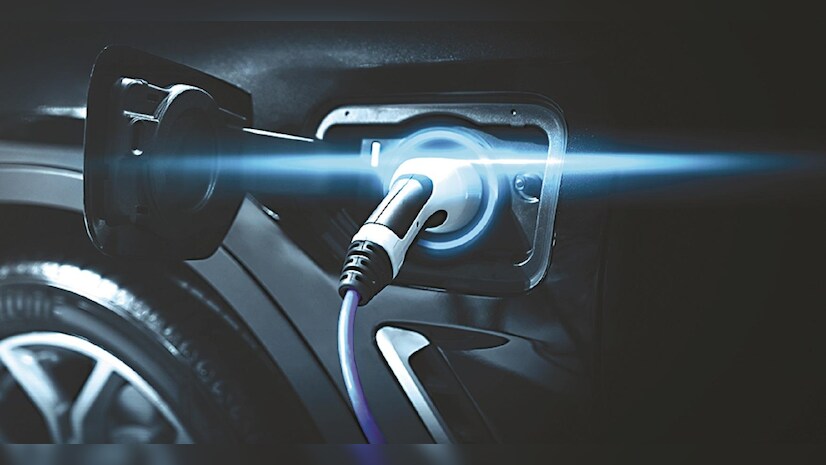Tesla: Revolutionizing EV Charging with Supercharger Networks

Strong 8k brings an ultra-HD IPTV experience to your living room and your pocket.
Introduction:
Tesla has long been a pioneer in the EV industry, and its Supercharger network is a cornerstone of its strategy. With over 45,000 Superchargers worldwide as of 2025, Tesla has established one of the largest and fastest charging networks. These chargers can deliver up to 250 kW of power, enabling drivers to replenish up to 200 miles of range in just 15 minutes.
Tesla's proprietary approach to charging ensures seamless integration with its vehicles, offering a user-friendly experience. Features such as automatic plug-and-charge capabilities and real-time availability updates through Tesla’s app make charging effortless. Recently, Tesla has also opened parts of its Supercharger network to non-Tesla vehicles, demonstrating a shift toward interoperability and inclusivity.
In addition to hardware, Tesla’s focus on energy efficiency and sustainability is evident. Many Supercharger stations are powered by renewable energy, and the company is investing heavily in solar-powered charging and Battery storage solutions to reduce the carbon footprint of its operations.
Download FREE Sample of Battery Market
ChargePoint: Building an Extensive EV Charging Ecosystem
ChargePoint operates one of the largest EV Charging networks globally, with over 300,000 charging points in 14 countries. Unlike Tesla, ChargePoint’s open network supports multiple vehicle brands, making it a versatile option for EV owners.
Download FREE Sample of Electric Vehicle Charging Market
ChargePoint’s business model includes both public and private charging solutions, catering to residential, commercial, and fleet needs. The company’s innovative cloud-based software enables seamless monitoring, management, and optimization of charging stations. For instance, businesses can set dynamic pricing, monitor usage, and access energy reports through ChargePoint’s platform.
ChargePoint also emphasizes partnerships to expand its reach. Collaborations with automakers, utilities, and governments have allowed the company to deploy charging stations in urban areas, workplaces, and highways. Additionally, ChargePoint is advancing ultra-fast charging solutions to meet the growing demand for rapid energy replenishment.
Siemens: Advancing EV Charging with Wireless Technology
Siemens is a global leader in electrification and has made significant strides in the EV charging industry. One of its most groundbreaking contributions is in wireless charging technology. Siemens’s wireless charging solutions aim to eliminate the need for physical cables, providing unparalleled convenience and efficiency.
The system uses electromagnetic induction to transfer energy between a ground-based charging pad and a vehicle-mounted receiver. This approach offers several benefits, including:
1.Ease of Use: Drivers simply park their vehicles over the charging pad, and the system automatically starts charging.
2.Enhanced Safety: By removing cables, the risk of tripping hazards and wear-and-tear is minimized.
3.Weather Resilience: Wireless systems are less affected by environmental factors like rain or snow, ensuring consistent performance.
Siemens is actively testing and deploying wireless charging systems for both private and commercial use. These systems are particularly appealing for autonomous vehicles, which require a hands-free charging solution. The company’s vision extends to dynamic charging, where vehicles could charge while in motion, further enhancing efficiency and reducing downtime.
In addition to wireless charging, Siemens is leveraging its expertise in smart grid technology to integrate EV chargers with renewable energy sources. By doing so, Siemens aims to create a more sustainable and resilient charging infrastructure.
The Role of Innovation in Shaping the EV Charging Landscape
Innovation is at the heart of the EV charging industry’s evolution. As EV adoption continues to rise, the demand for accessible, fast, and reliable charging solutions is paramount. Companies like Tesla, ChargePoint, and Siemens are addressing these challenges through technological advancements and strategic initiatives.
Interoperability and Standardization
One major trend is the push for interoperability and standardization. Tesla’s recent move to open its Supercharger network to non-Tesla vehicles is a significant step in this direction. Similarly, ChargePoint’s open network model promotes inclusivity by supporting a wide range of EVs. Standardizing charging connectors and protocols will be critical to ensuring a seamless experience for all EV drivers.
Sustainability and Renewable Integration
Sustainability is another key focus area. Tesla’s solar-powered Superchargers and Siemens’ smart grid integration highlight the industry’s commitment to reducing environmental impact. By combining renewable energy with advanced energy storage solutions, these companies are paving the way for a greener future.
Ultra-Fast and Wireless Charging
The development of ultra-fast and wireless charging technologies is transforming the charging experience. Tesla’s V3 Superchargers, capable of delivering up to 250 kW, significantly reduce charging times. Meanwhile, Siemens’ wireless charging systems offer unparalleled convenience and are poised to become a game-changer, especially for fleets and autonomous vehicles.
Challenges and Opportunities
Despite significant progress, the EV charging industry faces challenges such as high infrastructure costs, grid reliability, and the need for widespread adoption. Addressing these challenges requires collaboration among automakers, charging providers, and policymakers.
Opportunities abound in areas like urban charging solutions, rural electrification, and fleet management. For example, expanding charging infrastructure in underserved areas can accelerate EV adoption. Moreover, advancements in AI and IoT can enhance the efficiency and reliability of charging networks.
Conclusion
Tesla, ChargePoint, and Siemens are at the forefront of the EV charging revolution, each bringing unique strengths and innovations to the table. Tesla’s extensive Supercharger network, ChargePoint’s versatile ecosystem, and Siemens’ pioneering wireless charging technology are shaping the industry’s future. As these companies continue to push boundaries, the EV charging landscape will become more efficient, sustainable, and accessible, driving the transition to a cleaner transportation system.
Read the complete blog
Note: IndiBlogHub features both user-submitted and editorial content. We do not verify third-party contributions. Read our Disclaimer and Privacy Policyfor details.


